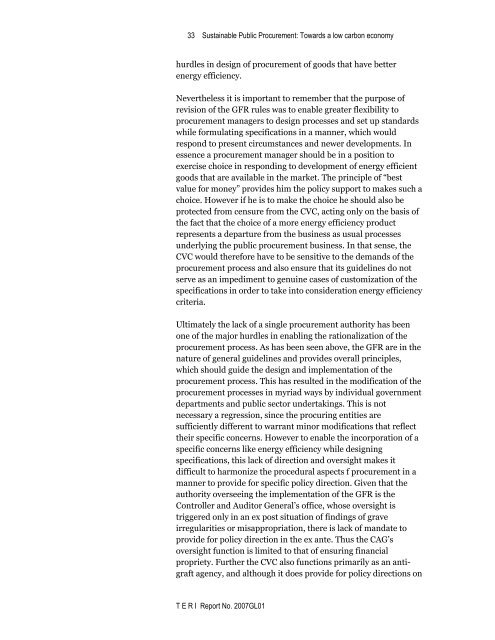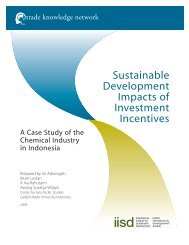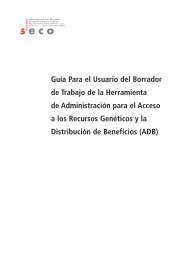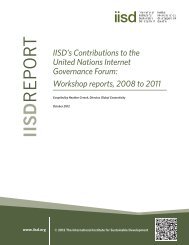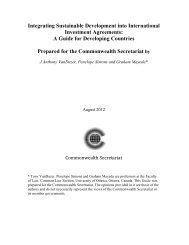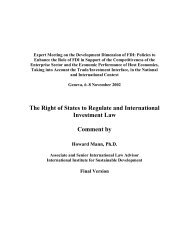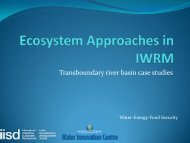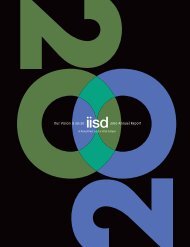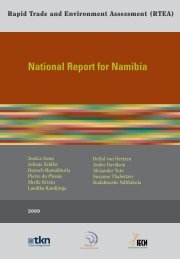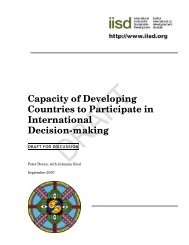Sustainable Public Procurement: Towards a lowâcarbon economy
Sustainable Public Procurement: Towards a lowâcarbon economy
Sustainable Public Procurement: Towards a lowâcarbon economy
You also want an ePaper? Increase the reach of your titles
YUMPU automatically turns print PDFs into web optimized ePapers that Google loves.
33 <strong>Sustainable</strong> <strong>Public</strong> <strong>Procurement</strong>: <strong>Towards</strong> a low carbon <strong>economy</strong><br />
hurdles in design of procurement of goods that have better<br />
energy efficiency.<br />
Nevertheless it is important to remember that the purpose of<br />
revision of the GFR rules was to enable greater flexibility to<br />
procurement managers to design processes and set up standards<br />
while formulating specifications in a manner, which would<br />
respond to present circumstances and newer developments. In<br />
essence a procurement manager should be in a position to<br />
exercise choice in responding to development of energy efficient<br />
goods that are available in the market. The principle of “best<br />
value for money” provides him the policy support to makes such a<br />
choice. However if he is to make the choice he should also be<br />
protected from censure from the CVC, acting only on the basis of<br />
the fact that the choice of a more energy efficiency product<br />
represents a departure from the business as usual processes<br />
underlying the public procurement business. In that sense, the<br />
CVC would therefore have to be sensitive to the demands of the<br />
procurement process and also ensure that its guidelines do not<br />
serve as an impediment to genuine cases of customization of the<br />
specifications in order to take into consideration energy efficiency<br />
criteria.<br />
Ultimately the lack of a single procurement authority has been<br />
one of the major hurdles in enabling the rationalization of the<br />
procurement process. As has been seen above, the GFR are in the<br />
nature of general guidelines and provides overall principles,<br />
which should guide the design and implementation of the<br />
procurement process. This has resulted in the modification of the<br />
procurement processes in myriad ways by individual government<br />
departments and public sector undertakings. This is not<br />
necessary a regression, since the procuring entities are<br />
sufficiently different to warrant minor modifications that reflect<br />
their specific concerns. However to enable the incorporation of a<br />
specific concerns like energy efficiency while designing<br />
specifications, this lack of direction and oversight makes it<br />
difficult to harmonize the procedural aspects f procurement in a<br />
manner to provide for specific policy direction. Given that the<br />
authority overseeing the implementation of the GFR is the<br />
Controller and Auditor General’s office, whose oversight is<br />
triggered only in an ex post situation of findings of grave<br />
irregularities or misappropriation, there is lack of mandate to<br />
provide for policy direction in the ex ante. Thus the CAG’s<br />
oversight function is limited to that of ensuring financial<br />
propriety. Further the CVC also functions primarily as an antigraft<br />
agency, and although it does provide for policy directions on<br />
T E R I Report No. 2007GL01


